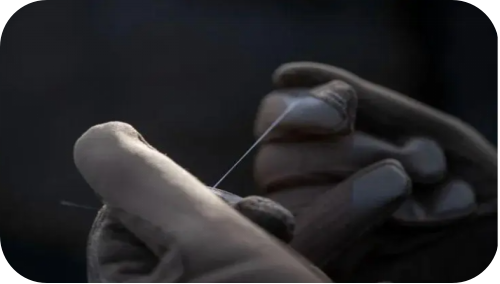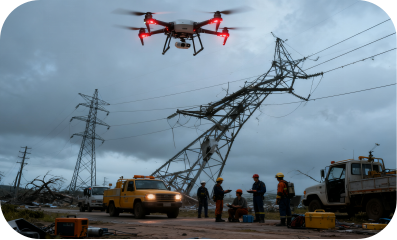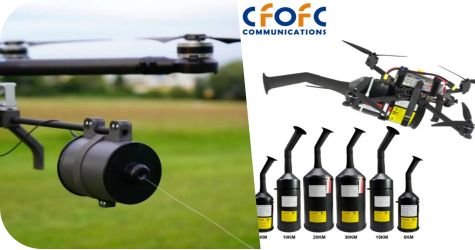When drones are used for high-voltage power line checks, their wireless signals often get interrupted by electromagnetic interference; in post-disaster rescue, just a 1-second delay in communication could cost a life. Today, as drones move from “simple aerial photography” to “professional work,” the stability of information transmission has become the key thing that decides if a mission succeeds or fails.
Now, “wireless” isn’t a sign of advanced tech anymore—instead, “wired” solutions are the key to fixing these problems. As a company focused on drone fiber optic communication, CFOFC uses ultra-light fiber optics (0.25-0.28mm in diameter) to give drones “low-latency, anti-interference” transmission support, making them more reliable when flying in complex situations.

Wireless Communication: A Real Headache for Drones in Complex Environments
With the rapid development of the low-altitude economy, drones have begun undertaking specialized tasks such as power line inspections, topographic surveying, and emergency rescue operations. However, the three major drawbacks of wireless communication have gradually become apparent:
- Wireless signals degrade with distance: Beyond 10 kilometers, latency tops 50 milliseconds.
- Weak anti-interference: High-voltage zones, building blockages, heavy rain, strong winds—these environments can all cut signals directly.
- Not secure enough: Wireless signals are easy to intercept or mess with. When it comes to confidential mapping or checking critical facilities, that spells big data security risks.
Fiber Optic Communication: Solving Key Challenges in Drone Operations
Wired fiber systems may sound old-fashioned, but for professional drones, they’ve become a proven way to achieve stable, long-distance communication.
- Ultra-Low Latency:Data transmission delay stays below 1 ms, offering responsive control that wireless signals can’t maintain once the range goes beyond 10 km.
- Strong Anti-Interference:Because fiber uses light instead of electromagnetic waves, it keeps data steady even in high-voltage areas or places with heavy signal interference.
- Lightweight Design:With a protective coating, each fiber remains just 0.25–0.28 mm thick. The light weight helps reduce power use and keeps the drone agile in flight.
- Smooth Deployment:Specially designed reels allow the fiber to unwind cleanly and stay tangle-free, even during quick maneuvers or turns

CFOFC: Fiber Solutions for Real Drone Applications
Located in Shenzhen, CFOFC focuses on developing and producing fiber optic products built around real operational needs.

Our Strengths
Experienced Team: Every product is designed and tested by our own engineers. We support customers through each stage — from discussing technical needs to on-site setup and adjustments.
Direct Manufacturing: By producing and selling directly, CFOFC helps clients lower purchasing costs by around 15% compared with standard market levels.
Reliable Quality: Our production lines include strict quality checks at every step, and each product is individually tested before delivery.
Our Services
Product Customization: Fiber color, coating, and housing can all be adjusted according to customer requirements.
Large-Scale Supply: With a monthly capacity of over 6,000 units, we can fulfill both small and bulk orders, giving long-term clients scheduling priority.
Production Line Support: For clients planning to build their own production, we offer a full set of resources — including equipment, raw materials, training, and spare parts.
Reliable Connection. Steady Flight.
CFOFC’s fiber optic technology brings stability, precision, and efficiency to professional drone missions — ensuring every flight performs with confidence
